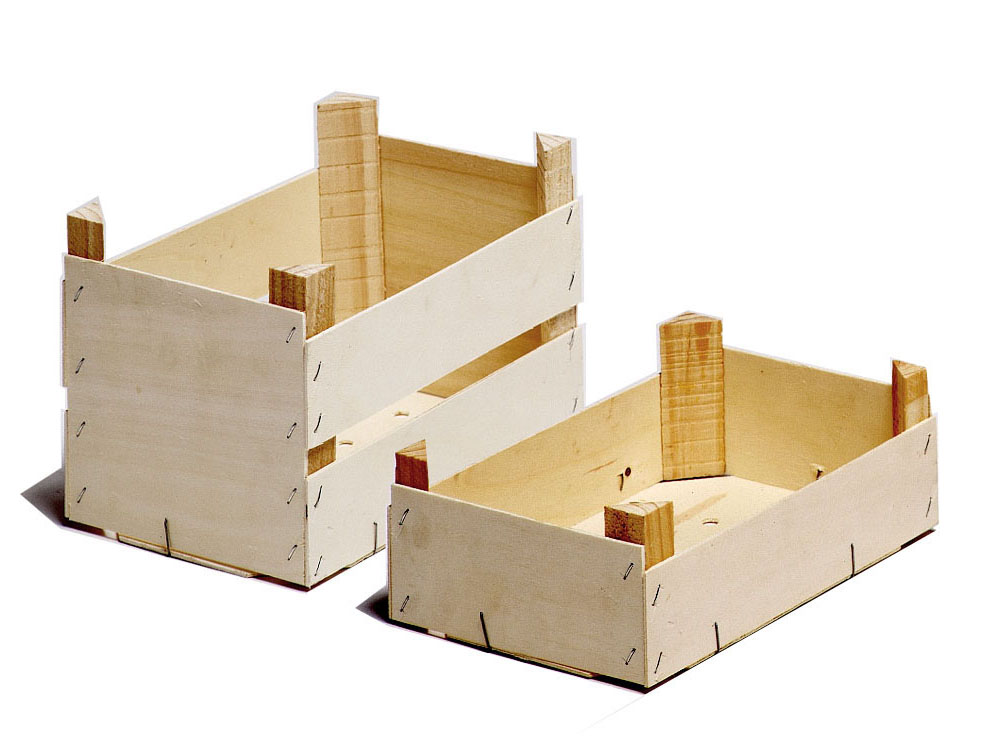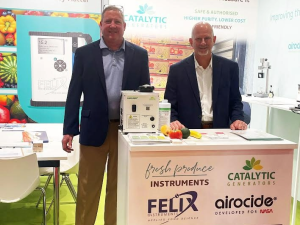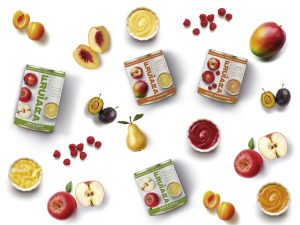The study was carried out with ‘pitufo’ wooden containers. It compares these with cardboard containers, and it was presented at a special seminar run by the Observatory for GEG (Greenhouse Effect Gases) at the UPV (Universidad Politécnica de Valencia), on wooden containers and their contribution to climate change mitigation.
Wood, as a material, has considerable advantages over cardboard for fruit and vegetable produce packaging, efficiently maintaining the properties of the transported produce.
The use of wood is beneficial to promote sustainable forestry management, particularly for Mediterranean forests, as high-quality raw material is not needed. “One m3 of wood retains around one tonne of CO2, and it emits 700Kg of oxygen,” explains the Manager of FEDEMCO, Raquel Aguado, who took part in the seminar’s presentation.
To carry out the research, a scope ranging from the creation to the final disposal was established (in technical slang “from cradle to grave”), based on limits and conditions laid out to guarantee greater accuracy in the results. In other words, these limits and conditions of the system play a crucial role in the results of the Life Cycle Assessment (LCA): the excess in weight of the container does not mean a significant impact in the transporting of the functional unit and the management at the end of the useful life of both containers on the destination market is carried out efficiently.
But what is the Life Cycle Assessment (LCA)?
The LCA is a technique used to determine environmental impacts associated to a product, service or process.
For the case in question, it involved carrying out a life cycle assessment of a wooden container in the 2 kilo ‘pitufo’ format and then carrying out a comparison with the same container format in cardboard. The functional unit used in the study has been based on the export of 1,000 tonnes of mandarins destined for the German market, located at a distance of 2,500 km, owing to the fact that it is a common operation with the German market being the main purchaser of Spanish mandarins. The total number of pitufos used will reach 434,783 units.
In order to analyse the cardboard container, contrasted bibliographical sources have been used; while for the wooden container, measurements were taken directly at the container factories, and they were supplemented with proven bibliographical sources. In both cases, the approach was comprehensive, from production until the end of the useful life, to guarantee accurate results in the Life Cycle Assessment (LCA). This approach considered factors such as transport, the use of the container, and waste management, for both cardboard and wood.
Assumptions for wood and cardboard
As initial assumptions, for both wooden and cardboard containers, the transport of the raw materials (rolls of paper) and the box to the packager, carried out in uncooled lorries with a maximum weight of 40 t were included. The consumption of the 40t lorries with a load of 20-24 tonnes is 33 litres per 100 km.
Finally, the transport of the wastage derived from container manufacturing to the waste management centres is carried out in 16t lorries, which means a consumption of 24 litres per 100 km.
Impact evaluation
The impact evaluation is carried out according to the Recipe 2016 methodology and it includes climate impacts, a category that evaluates the global warming potential of the greenhouse effect gases emitted during the life cycle of the product. This is measured in carbon dioxide equivalents, acidification of the soil and water due to the emission of acid substances, measured in sulphur dioxide equivalents; the eutrophication analyses the release of nutrients that causes an excessive growth of algae and plants and affects aquatic ecosystems, which is recorded in phosphate equivalents; exhaustion of abiotic resources, natural, non-renewable resources (minerals and fuels); exhaustion of biotic resources such as biomass and forestry resources; and, finally, human toxicity, the exposure to harmful chemical substances, which is expressed in kilograms of 1.4-dichlorobenzene equivalent (1.4DCB-eq).
Due to all the above, the LCA is the determining scientific methodology in the transition towards a circular bioeconomy.
Main Results of the Study
Amongst the main results of the study, the difference in the environmental impact of cardboard compared to wood is worth mentioning:
- Global warming: Wooden containers emit round 50% less than cardboard ones.
- Soil use: Wooden contains require 70% less soil use.
- Land eco-toxicity: Wooden containers contaminate the land environment by approximately 30% less.
- Fresh water eco-toxicity: Wooden containers pollute 54% less than cardboard containers.
- Marine eco-toxicity: The difference between cardboard and wooden containers in this impact is 48%, with wooden containers polluting less.
Conclusions
Due to all the above, using wood for manufacturing containers brings a natural, renewable material onto the market, substituting other materials that come from non-renewable sources or that use far more resources in their manufacturing process. Wood also contributes to meeting the EU’s industrial sustainability legislation and policies.
For this reason, FEDEMCO, in alliance with the wooden board producing companies and the technological institute AIDIMME, has launched the European brand ECOWOOX®. This certification stamp accredits the entire recyclability of wooden containers according to the following standards: UNE-EN 13427, UNE-EN 13428, UNE-EN 13430 and UNE-EN 13431, meeting the requirements of the Royal Decree 1055/2022 on containers and container waste, by which manufacturers certify to the packagers that they meet the basic requirements for the manufacturing and composition of the recyclable containers.

















